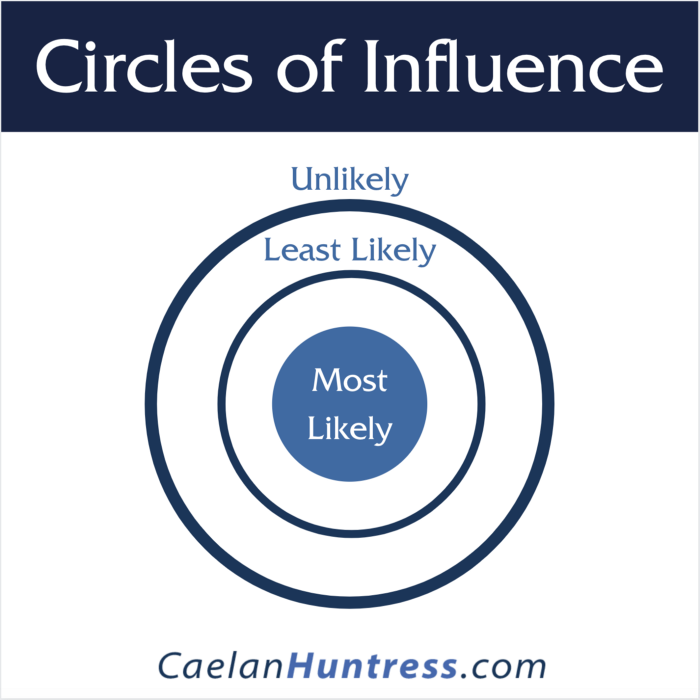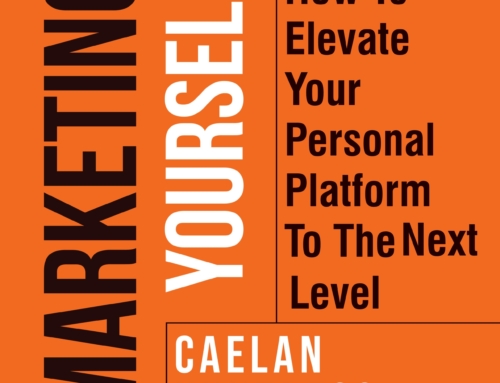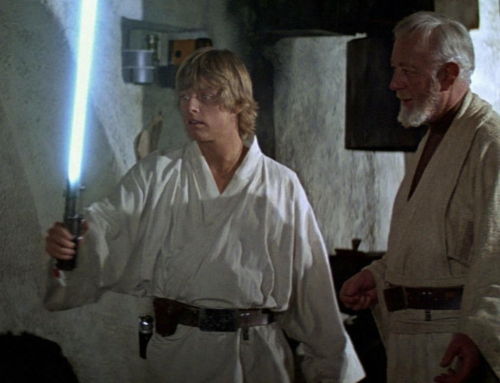Sell to small groups of your most qualified prospects
Every time a coin landed in my guitar case, I smiled and sang, ‘Do you have a couch for me? I’m looking for a couch for free.’
In 1997 I lived as a street musician for a year. I hitchhiked across North America and survived off of the kindness of strangers. Unlike many of my fellow hobos, I had a craft: I could play the guitar. Every day, I spent a few hours playing music in a public place. This earned me enough money for tacos and cigarettes for the day. Sometimes, playing guitar introduced me to people with couches.
Because I had a musical instrument, I could attract people who liked to hear a stranger play music. After a song or two, I would let them know that I was passing through town, and looking for a place to crash. Instead of sleeping outside every night, I often slept in spare bedrooms or on comfortable couches. I was busking out to my target audience.
If I had held up a sign on the side of the road that said ‘looking for couch,’ I would have slept outside more often than not. Instead I offered value and made an impression first, before making my pitch. In sales terms, this enabled me to close more prospects in smaller numbers.
‘Busking out’ is a term from the world of street performance. When you pass someone on a sidewalk who has a hat full of money on the ground, that person is busking out. They don’t charge admission for their performance, they give the performance for free. As a consequence of that free performance, some people voluntarily pay for it.
Lunch and learns, free workshops, and infomercials are all examples of busking out. You provide interesting or useful content, and people pay with their attention. After collecting the attention of people who find your content interesting and useful, you make an offer.
Busking Out vs. Advertising
A random hitchhiker is a stranger, but a local musician is interesting. People who liked talking with new strangers were also those most likely to pick me up as a hitchhiker.
On a freeway on-ramp, I only had a few seconds to make an impression. My thumb, my posture, and the outline of my guitar case had to swiftly persuade my prospective chauffeurs. It was like the flash of an advertisement, and success was mostly a numbers game.
Busking out is different than advertising. Instead of grabbing attention from a large group in a flash, you earn a small group’s attention for a little while. Once you have that attention, you can decide what to do with it.
Case Study: Peter Cook Goes Busking Out
Peter Cook is a modern master of busking out for business. He has a 3-hour workshop that he teaches to bookkeepers who want to grow their bookkeeping business. Peter offers solutions to specific difficult challenges his market is facing for 2.5 hours, and then he spends 30 minutes pitching his 12-month program.
If Peter gave a 30-minute pitch to 12 bookkeepers individually, he could expect to close 10–20% of his pitches. By collecting a group of prospects into one room, he spends less time selling by making a pitch to all of them at once. He front-loads the interaction with massive value to demonstrate his expertise, and closes 25–50% of his prospects.
Busking out is smart selling.
Peter used this model when I met him, while he was busking out for Thought Leaders Business School. He came to Wellington from Melbourne, and reached out to me beforehand on LinkedIn to offer to meet me for a coffee. When I said yes, he sent me a free copy of his excellent book. (See my video review of The Thought Leaders Practice here.) He also invited 80 other people to meet us for coffee, at the same time.
The presentation he gave was fantastic. It was well-targeted to the people in the room (coaches, speakers, authors, and trainers.) At the end, he presented an offer to join Thought Leaders Business School. I was one of the many people at his busk out who signed up. Because he had already provided so much practical value, I knew the rest of his material was going to be great (and it was).
4 Simple Steps to Busking Out
If Peter had reached out to me on LinkedIn to sell me an expensive program, I would have ignored him. Instead, this is what Peter did:
- Reach out and offer value
- Send an invitation to an interesting event
- Provide massive value during that event
- Close with an invitation to purchase more value
Busking out is more efficient and effective than marketing broadly to a general audience. You can demonstrate expertise (and build trust) by solving simple problems for a narrow niche in a free presentation.
After you impress prospects with your knowledge, they will feel grateful for the value you have given them. This is the perfect time to make an offer to do business with you.
According to the Harvard Business Review, personalisation reduces lead acquisition costs by as much as 50%. This means if you can personalise your presentation to incorporate the specific details of people in the room, your revenue is likely to increase by 5–15%. In the same study, they found that personalisation increases marketing spend efficiency by 10 to 30%.
You can spend less money, smarter, by busking out to a targeted audience.

The people who are most likely to do business with you have already progressed through the first three steps of the Marketing Cycle — Know, Like, and Trust. Focus your marketing efforts on the people most likely to do business with you.
People who do not know you, or like you, or trust you are least likely to buy. Don’t waste your sales activity on the outer circles; focus where it is most effective. There is an easy method to convince strangers that you are trustworthy, likeable, and knowledgeable. Give them a free presentation first before you make a pitch, and they will enter the innermost circle.
Busking out focuses your best marketing on your most qualified prospects.
You can stand on a soapbox at the train station and try to convince a big crowd of strangers to listen to you. I can tell you from experience, this has a very low closing ratio. When I was busking out with my guitar, sometimes a hundred people would pass me by before I earned a coin.
Where I did really well was in small tourist towns. People were not commuting from one place to another. They were looking for something unique and interesting. I gave them what they were looking for, and then after volunteering value, I made a pitch.
This is the fundamental premise behind busking out. Give value first, then make an offer. How can you provide massive value to a captive audience of qualified leads? Figure this out, and your sales process will become much easier (and more entertaining).
This article is an excerpt from my book, ‘Marketing Yourself.’ You can read the whole book here.






Leave A Comment